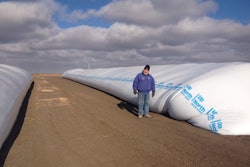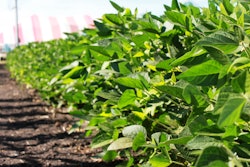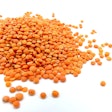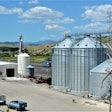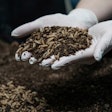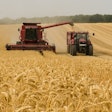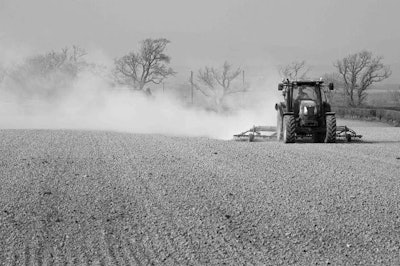
The corn market continues to be influenced by two major fundamental factors. One is the on-going high rate of consumption, particularly the magnitude of export sales. Export commitments as of April 17 accounted for 97 percent of the USDA's projection of exports for the year that has just over 19 weeks remaining. The major concern is that 38 percent of those sales have not yet been shipped and could be subject to cancellation or rolling into the next marketing year. The second factor is the slow start to the planting season. Only six percent of the acreage in the 18 major corn producing states was reported as planted as of April 20.
Delayed corn planting could have implications for the magnitude of acreage that gets planted and for the average U.S. yield. Over the years, both topics have been analyzed and discussed extensively so that there may be few new insights to offer. Still, there is some obligation to discuss the topic again in the context of the current situation. For acreage, the concern is that a late corn planting season could result in some reduction in corn acreage in favor of crops that do not need to be planted quite as early. In most cases that would mean a switch of intended corn acres to soybeans or other oilseeds. With extreme delays, prevented planting also becomes an issue. The switch away from corn is based on expectations that corn yields could be adversely impacted by late planting, with late planting generally defined by agronomic research that correlates planting date to yield. The yield response to planting date is not linear, as the yield penalty is small over a wide range of planting dates and then generally becomes steeper as planting dates become later. For major corn producing states, the yield penalty tends to become steeper for planting dates some time after mid-May.
Some indication of the potential acreage response if planting delays continue this year may be provided by acreage responses in previous years of late planting. The historical acreage response to late planting, however, may have been influenced by the nature of crop insurance programs and federal farm programs in place at the time. To partially control for those potential effects, only the period since 1996 is considered in the analysis of acreage response since no annual federal acreage programs were in place after 1995. The magnitude of late planting is generally defined as the percent of the crop planted after a certain date as revealed in the USDA's weeklyCrop Progressreport for the 18 major corn producing states. Based on our analysis of yield response in the Corn Belt, we have defined late planting as occurring after May 30 before 1986 and after May 20 since 1986. In the 18 years from 1996 through 2013, an average of 16 percent of the corn acreage was planted after May 20, in a range of four to 37 percent. Twenty percent or more of the crop was planted late in seven of those years. Planted acreage was less than March intentions in six of those seven years. The difference, however, was extremely small (32 thousand to 691 thousand acres) in five of those six years. Acreage was 1.9 million less than March intentions in 2013. Oddly, acreage exceeded March intentions by 1.4 million acres in 2009, the year with the second most acreage (29 percent) planted after May 20. Prevented corn plantings were reported at 1.9 million acres in 2009 and 3.6 million acres in 2013.
In general, acreage response to late corn planting since 1996 has been smaller than anticipated, with meaningful differences (but in opposite directions) in only two years. In addition to the timeliness of planting, acreage decisions might be influenced by a change in the relationship of the prices of corn and competing crops. That is, more corn acres might be planted after the date for optimum yields if corn prices increase enough relative to other crops to offset the potential yield penalty. Compared to the ratio on March 31 when the USDA released theProspective Plantingsreport, the ratio of November 2014 soybean futures to 2014 December corn futures now favors soybeans more than corn. It appears that the market is not yet concerned about the loss of corn acreage this year.
美国玉米产量平均收益率相对于趋势has varied considerably in years of late planting. In the 43 years from 1971 through 2013, we calculate that the percentage of the corn acreage planted late (after May 30 before 1986 and after May 20 since 1986) was 20 percent or more in 13 years. Compared to the unconditional trend yield from 1960 through 2013, the U.S. average yield was at or above trend yield in eight of those years and below trend yield in five years. The largest negative deviation from trend yield occurred in 1993 when record flooding occurred in parts of the western Corn Belt. The largest positive deviation from trend yield occurred in 2009 under the influence of a cool, wet summer. These results tend to support the notion that summer weather, not timeliness of planting, is the major determinant of the U. S. average corn yield.
Significant corn planting likely occurred in some areas last week, but prospects for a cool, rainy pattern over much of the northern Plains and Corn Belt over the next 10 days do not favor rapid corn planting. With over three weeks until corn planting is considered late by our definition, it is difficult to anticipate the potential impact of delayed planting on the magnitude of planted acreage. Without a more favorable corn price response, however, it would not be surprising for acreage to fall short of intentions, particularly in northern growing areas. Yield prospects will be up in the air until later in the season.
Issued byDarrel Good
Department of Agricultural and Consumer Economics
University of Illinois





